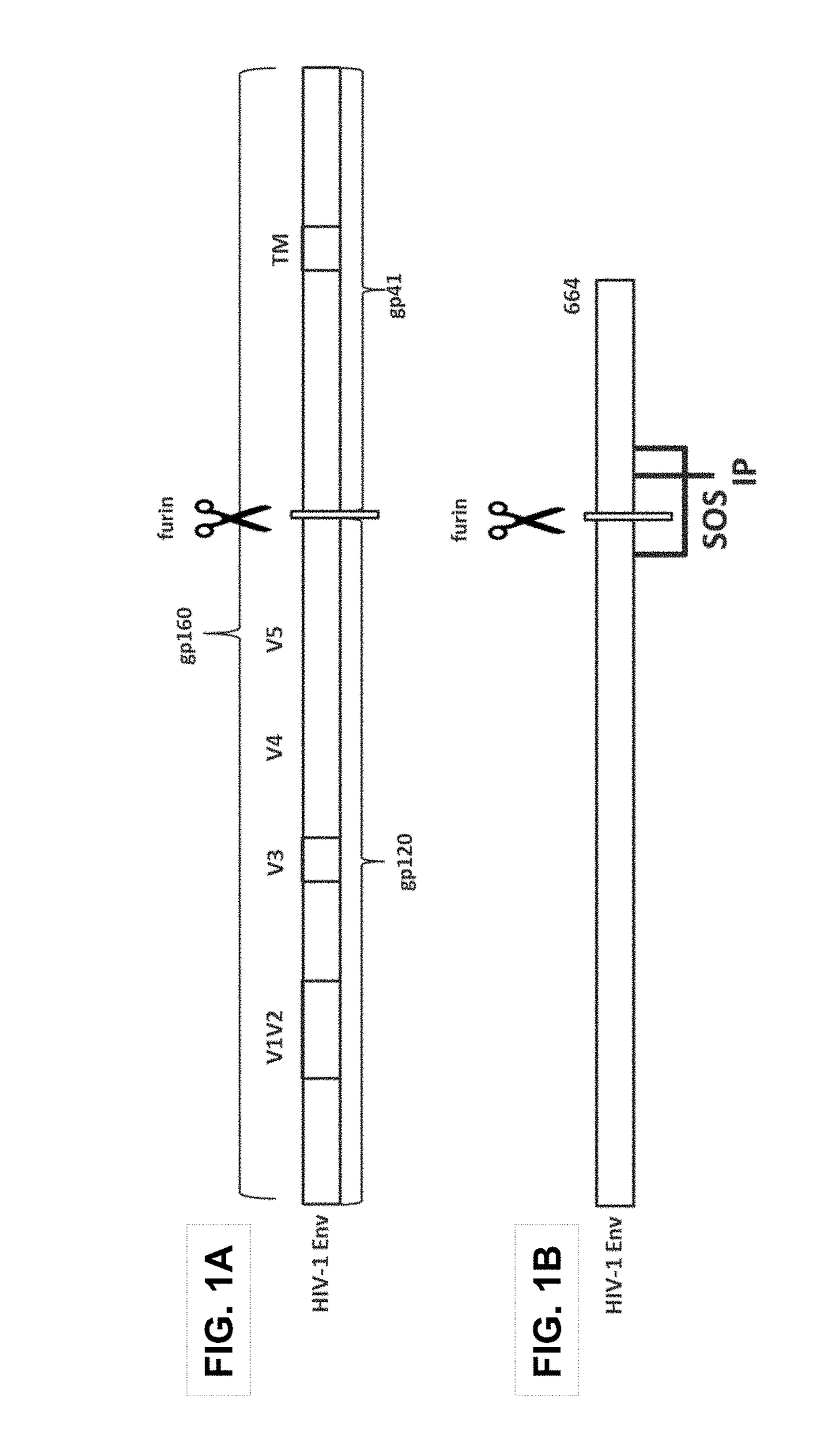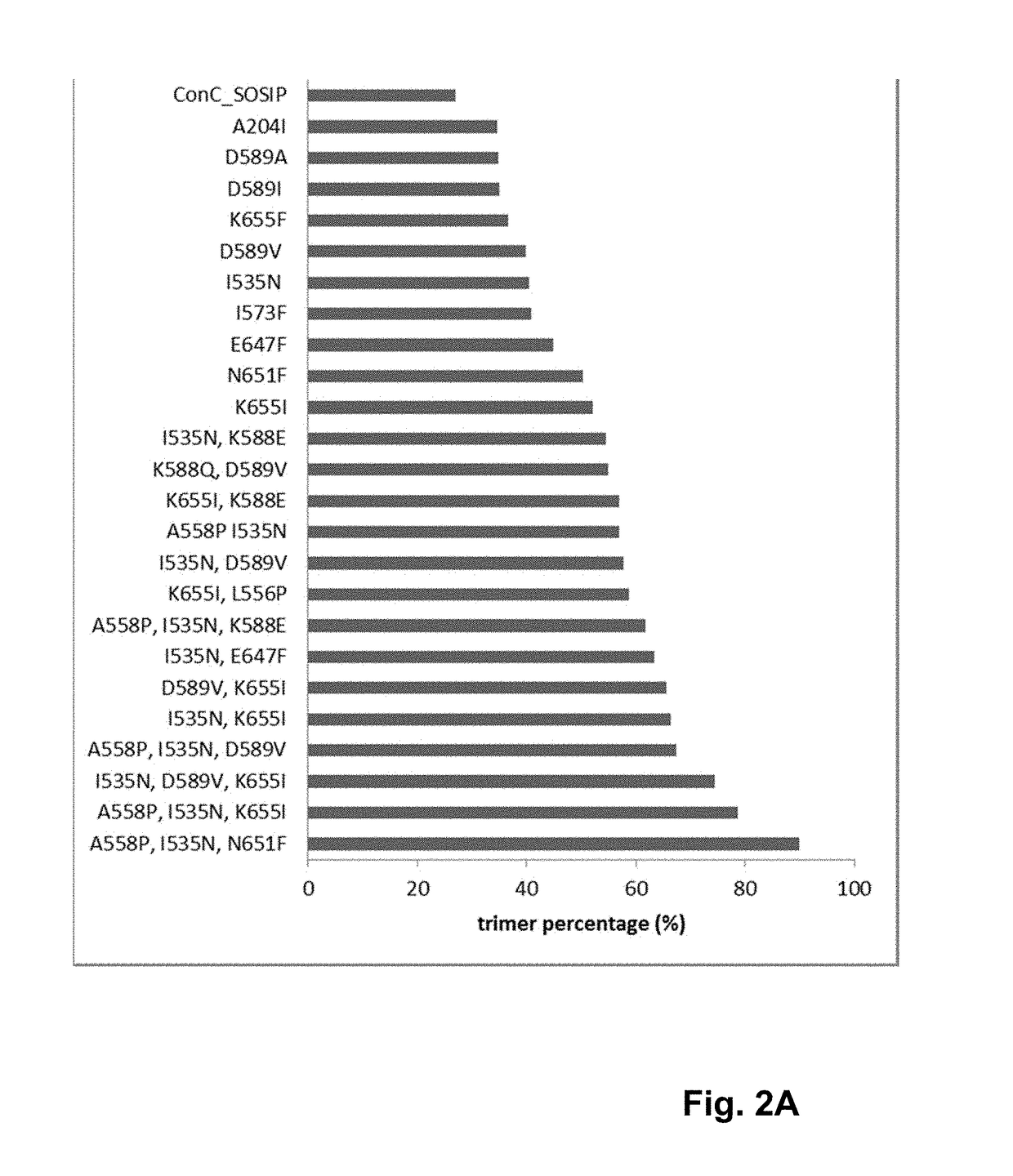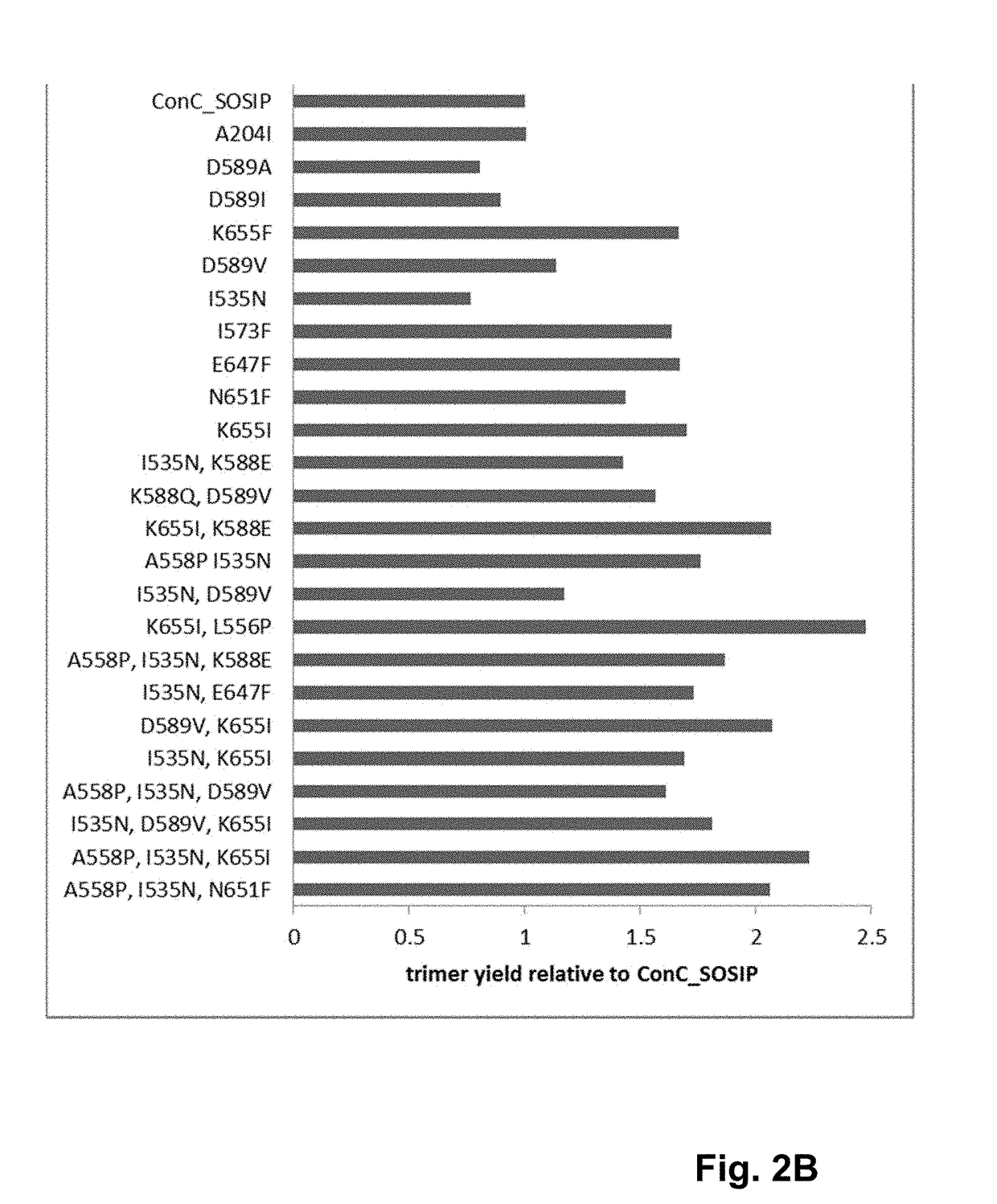Trimer stabilizing HIV envelope protein mutations
a technology of hiv envelope and protein, applied in the field of trimer stabilizing hiv envelope protein mutation, can solve the problems of difficult development of a hiv vaccine based on the envelope protein, unstable wild-type envelope protein, difficult to broaden the application range of the vaccine, etc., to optimize the folding and stability of prefusion-closed hiv-1 envelope trimers, improve the percentage of trimer formation, and improve the yield
- Summary
- Abstract
- Description
- Claims
- Application Information
AI Technical Summary
Benefits of technology
Problems solved by technology
Method used
Image
Examples
embodiments
[0190]Embodiment 1 is a recombinant HIV Env protein, that comprises at position 658 an amino acid chosen from the group consisting of Val, Ile, Phe, Met, Ala, and Leu,
[0191]wherein the numbering of the positions is according to the numbering in gp160 of HIV-1 isolate HXB2.
[0192]Embodiment 2 is a recombinant HIV Env protein of embodiment 1, wherein the amino acid at position 658 is Val.
[0193]Embodiment 3 is a recombinant HIV Env protein of embodiment 1, wherein the amino acid at position 658 is Ile.
[0194]Embodiment 4 is a recombinant HIV Env protein of embodiment 1, wherein the amino acid at position 658 is Met.
[0195]Embodiment 5 is a recombinant HIV Env protein of embodiment 1, wherein the amino acid at position 658 is Phe.
[0196]Embodiment 6 is a recombinant HIV Env protein of embodiment 1, wherein the amino acid at position 658 is Ala.
[0197]Embodiment 7 is a recombinant HIV Env protein of embodiment 1, wherein the amino acid at position 658 is Leu.
[0198]Embodiment 8 is a recombinan...
example 1
Generation of HIV Envelope Clade C and Clade B Consensus Sequence
[0289]HIV Envelope Clade C Consensus Sequence
[0290]An HIV clade C envelope (Env) protein consensus sequence was developed as the backbone sequence for studying the effects of various mutations on trimer formation of the HIV Env proteins. A sequence alignment of 3,434 envelope protein sequences from known HIV viral isolates was downloaded from the Los Alamos Database (http: / / www.hiv.lanl.gov / content / index). From the 3,434 sequences, 1,252 sequences of clade C only were selected to generate the HIV clade C Env protein consensus sequence. At positions for which a consensus residue could not be clearly identified based on the alignment, the consensus sequence was used to identify the closest wild-type sequences by a BLAST search. The consensus residue at these positions was then selected as the amino acid in the closest wild-type sequences identified from the BLAST search. The HIV Env clade C consensus sequence is shown in...
example 2
Expression and Purification of Recombinant HIV Env Protein
[0296]Recombinant HIV Env proteins were expressed and purified as soluble gp140 proteins. Single mutations (amino acid substitutions) and combinations thereof (e.g., double and triple mutations) were introduced into the ConC_SOSIP backbone consensus sequence to generate a series of recombinant HIV Env protein variants.
[0297]Generation and Expression of HIV gp140 Env Constructs and Variants
[0298]DNA encoding the HIV clade C Env consensus sequence ConC_SOSIP shown in SEQ ID NO: 3 was synthesized and codon-optimized at GenScript (Piscataway, N.J. 08854) or Gene Art (Life Technologies, Carlsbad, Calif.). The codon-optimized sequence was then cloned into the vector pcDNA2004 to generate an HIV clade C gp140 Env construct, which was used as the backbone HIV envelope sequence for introducing further mutations. Mutations were introduced into the ConC_SOSIP backbone sequence by site directed mutagenesis and polymerase chain reaction (...
PUM
| Property | Measurement | Unit |
|---|---|---|
| distance | aaaaa | aaaaa |
| pH | aaaaa | aaaaa |
| pH | aaaaa | aaaaa |
Abstract
Description
Claims
Application Information
 Login to View More
Login to View More - R&D
- Intellectual Property
- Life Sciences
- Materials
- Tech Scout
- Unparalleled Data Quality
- Higher Quality Content
- 60% Fewer Hallucinations
Browse by: Latest US Patents, China's latest patents, Technical Efficacy Thesaurus, Application Domain, Technology Topic, Popular Technical Reports.
© 2025 PatSnap. All rights reserved.Legal|Privacy policy|Modern Slavery Act Transparency Statement|Sitemap|About US| Contact US: help@patsnap.com



